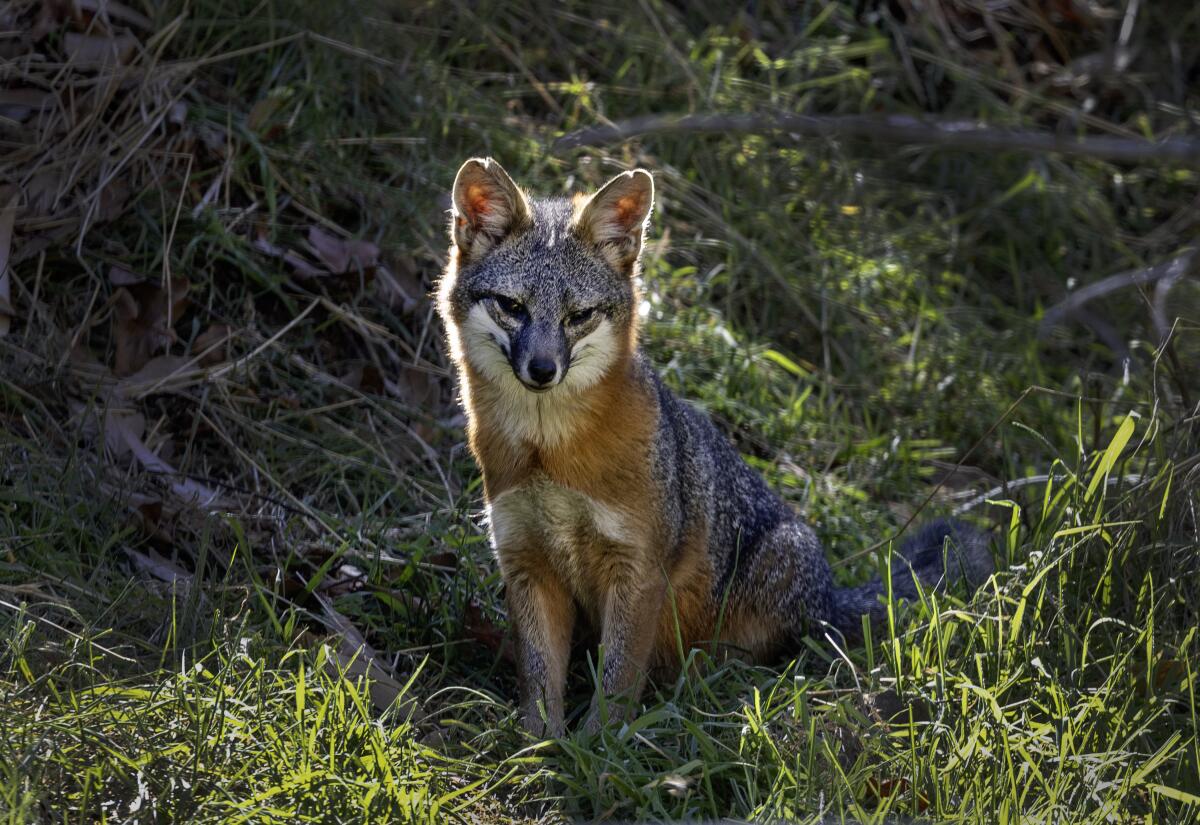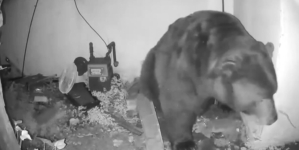-
NFL Slaps Broncos LB Nick Bonitto With Hefty Fine Ahead of Raiders Matchup - 4 mins ago
-
What to Know About Netflix’s $83 Billion Deal for Warner Bros. Discovery - 11 mins ago
-
Bears’ Caleb Williams Hit With Concerning Take Before Packers Showdown - 39 mins ago
-
Eastside Santa Barbara holiday parade canceled over ICE raid fears - 43 mins ago
-
Why Is Christianity So Hard to Find in the Trump Administration? - 55 mins ago
-
Report: Eagles Make Significant Change Before Facing Chargers - about 1 hour ago
-
Francis Ford Coppola’s F.P. Journe Sells for $11 Million at Auction - 2 hours ago
-
How to Watch UFC 323 Main Card: Live Stream Dvalishvili vs Yan 2, TV Channel - 2 hours ago
-
In Honduras, Some Voters Were Swayed by Trump, Others Angered - 2 hours ago
-
Blue Jays’ $32 Million Hurler Waived, Outrighted to Triple-A - 2 hours ago
New conservation plan seeks to shoot Catalina’s deer on the ground instead of from helicopters
Santa Catalina Island’s mule deer are back in the crosshairs.
This month, the California Island Conservancy announced a plan to rid the landscape of its entire nonnative deer population using contracted hunters, saying the animals increase the risk of wildfire.
Last year, the conservancy — which manages 88% of the island — scrapped a proposal to shoot the deer from helicopters, facing community outrage and opposition from local representatives.
This time around, professional contractors would shoot the island’s estimated 2,165 deer on the ground with rifles, said Pepe Barton, communications director for the conservancy.
The latest iteration of the project is stirring up familiar ire, with some expressing a deep connection with, and concern for humane treatment of, the deer. But the conservancy says the deer must go in order to restore the health of the island.
“When deer are eating native plants, those are being replaced by invasive annual grasses, and then those dry out quickly and burn easily,” Barton said. “And then as a burn comes through, the native plants that are trying to grow back are eaten down again.”
“So you have to really kind of think of it as like a bad habit,” he added. “The more it happens, the harder it is to break.”
Barton said January’s devastating wildfires were a wake-up call. Fearing fire, the nonprofit shut down the interior of the island and canceled all ecotours. Southern California Edison cut power.
Catalina, one of the Channel Islands, is about an hour’s ferry ride from Long Beach; it’s challenging for crews to get there in a pinch, Barton said.
The California Department of Fish and Wildlife is now considering the conservancy’s permit application for its restoration work, according to a spokesperson for the agency.
Pending state approval, the concerted hunt could begin as soon as early next year. It’s expected to take roughly five years.
L.A. County Supervisor Janice Hahn, whose district includes the island, urged state wildlife officials to reject the request in a letter to the director of Fish and Wildlife.
In a news release, the supervisor said she appreciated that the conservancy had abandoned the use of aerial sharpshooting, but the new proposal “still represents a drastic and inhumane approach that ignores the values of many Catalina residents and visitors.”

Protesters with the Coalition Against the Slaughter of Catalina Deer demonstrate in Avalon in October 2023 against a previous plan to shoot deer.
(Allen J. Schaben / Los Angeles Times)
According to the release, L.A. County Fire Chief Anthony Marrone pushed back on the notion that deer pose a fire hazard, telling the supervisor he believes the animals mitigate fire risks by eating vegetation.
The conservancy “should be attempting every possible alternative before resorting to their eradication,” Hahn said, pointing to expanded hunting seasons, relocation and sterilization.
On its website, the conservancy says it considered and ruled out all of those options except sterilization, which could be used for some deer around the city of Avalon.
Mule deer — with their white hindquarters and regal antlers — were first brought to the island in 1928 as game animals, according to Barton.
While recreational hunting continues to this day, the nonprofit says it has failed to curb the species. Last year, 1,000 tags were offered, but only 379 deer were harvested, according to the conservancy.
If the deer removal is green-lit, locals will still be able to hunt during the designated season in the early phases of the project, the nonprofit said.
Brendan Cummings, conservation director for the Center for Biological Diversity, said that removing deer would offer hope for an island that ranks “among the state’s most fragile and imperiled biodiversity hotspots.”
Throughout the Channel Islands, an archipelago referred to as the Galapagos of North America, removing invasive species had led to recovery.
“If the unique and irreplaceable native species on Catalina are to survive and ultimately recover, the single most important thing that needs to be done is to remove the nonnative deer herd from the island,” he said in a statement.

A federally threatened Catalina Island fox watches a mule deer fawn drinking water in the city Avalon.
(Allen J. Schaben / Los Angeles Times)
For now, Barton said there are several plants that can thrive on the island only with fencing surrounding them, including the endemic island tree poppy.
Visit the fenced flora today, “and it looks like a museum of native plants because they have to be protected in order to survive.”
Source link





















